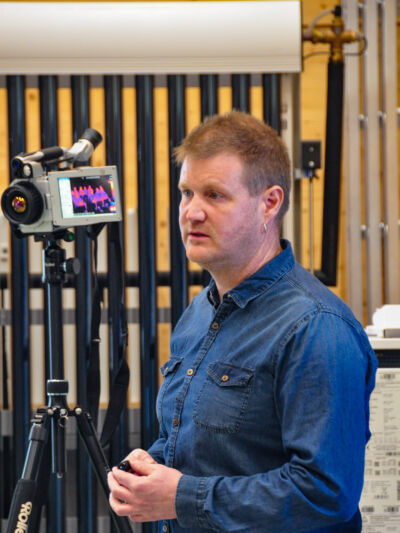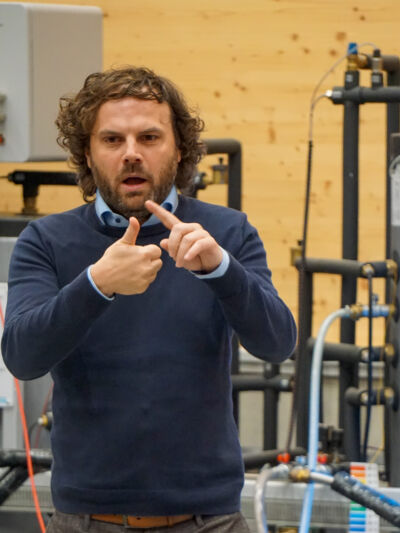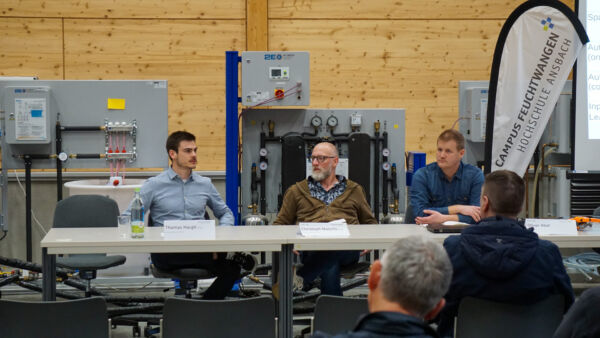Varied application of thermography
Further training to become an energy system expert against inadequate networking
On Wednesday last week, the Energy Talk took place again at the Campus Feuchtwangen of the University of Applied Sciences Ansbach. Dipl.-Ing. Oliver Abel set the focus of the evening with an introduction into the world of thermography. The subsequent discussion and Q&A session was attended by Prof. Dr.-Ing. Johannes Jungwirth and the two research assistants Thomas Haupt, M. Sc. and Dipl.-Ing. Christoph Matschi, M.Sc.
“Any body with a temperature above absolute zero of 0K (-273°C) emits electromagnetic radiation. Thermography uses this principle to measure temperatures without contact and convert them into an image” laboratory engineer Oliver Abel explained to the visitors. “The advantages of thermography are numerous: it enables the investigation of hot, moving or live surfaces without the need for mechanical action on the surface. Investigations can also be carried out in the running process. The method is hygienic and can be applied at long distances. However, there are limitations: The object must be visible and only surface temperatures can be measured.”


“Thermography is used in various areas” explains the part-time energy consultant further. “On buildings, for example, it is used to find thermal bridges. For this, however, sufficient temperature difference, closed buildings, dry ambient conditions, no precipitation and no direct solar radiation must be given. The best time to investigate is in the early morning hours before sunrise.”
He also points to the use of drones for thermography: “Inspections of PV plants, bridges, wind turbines, the energy grid infrastructure and biogas plants are just a few examples. The method can also be used in a supportive manner during operations by fire departments, THW or police. In agriculture and forestry, drone-based thermography can also be used to determine soil moisture and plant growth. The search for fawns can also be supported with this method.”
“Overall, thermography offers an innovative way to measure and image temperatures without contact. The possible applications are diverse and range from the construction industry to agriculture” summarizes Oliver Abel.
In the question and answer session that followed, one of the topics discussed was whether thermal or electrical storage makes more sense: “Thermal storage can be a useful and inexpensive addition in certain places. An electric storage system, on the other hand, offers significantly more flexibility and can also feed an electric vehicle or other consumers in the household in addition to the heating system,” said Johannes Jungwirth.
Thomas Haupt comments on the lack of networking between the wallbox, heat pump and battery storage: “We are currently making similar experiences with our real laboratory on campus. There is definitely still potential here on the part of the manufacturers. We are already working on a corresponding research project with which we want to address precisely this challenge. How can existing energy management concepts be better integrated into practice and used more effectively?” And Christoph Matschi adds: “We are already taking a first step with our upcoming further training to become an energy system expert in order to support planners and tradesmen.

